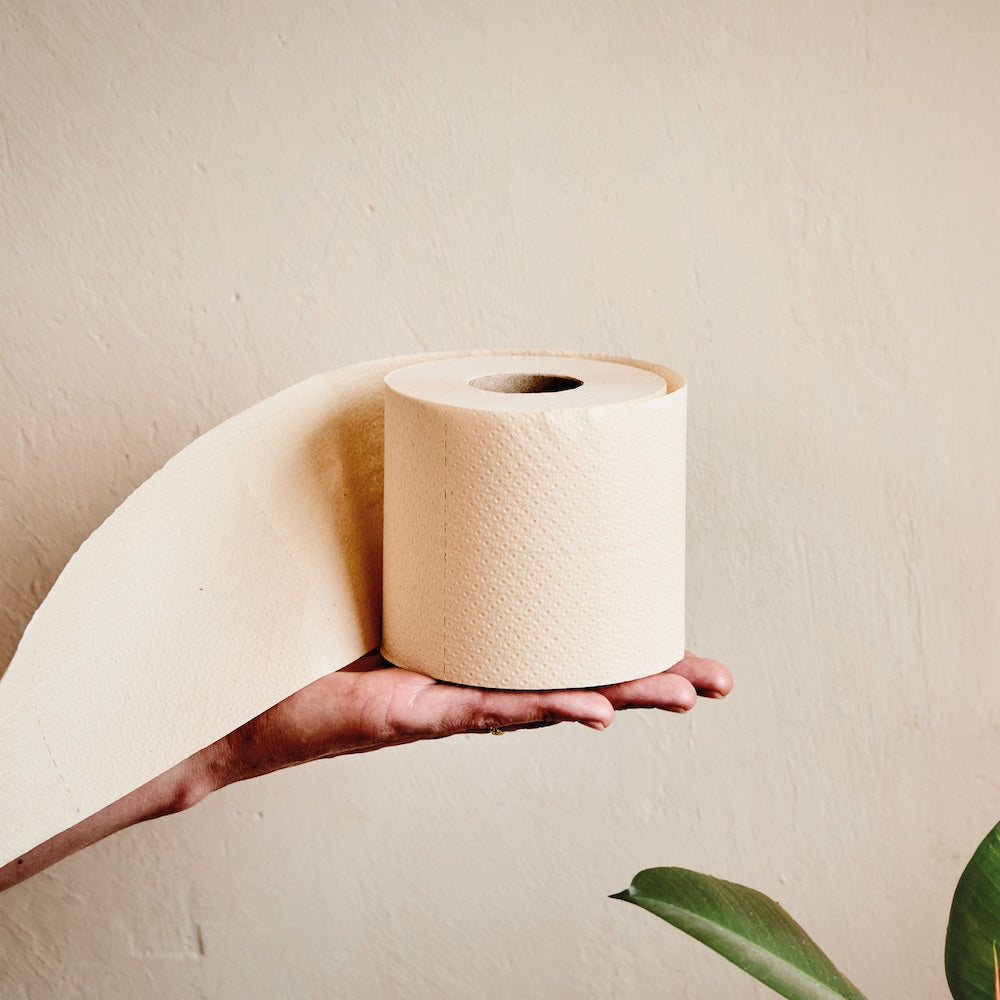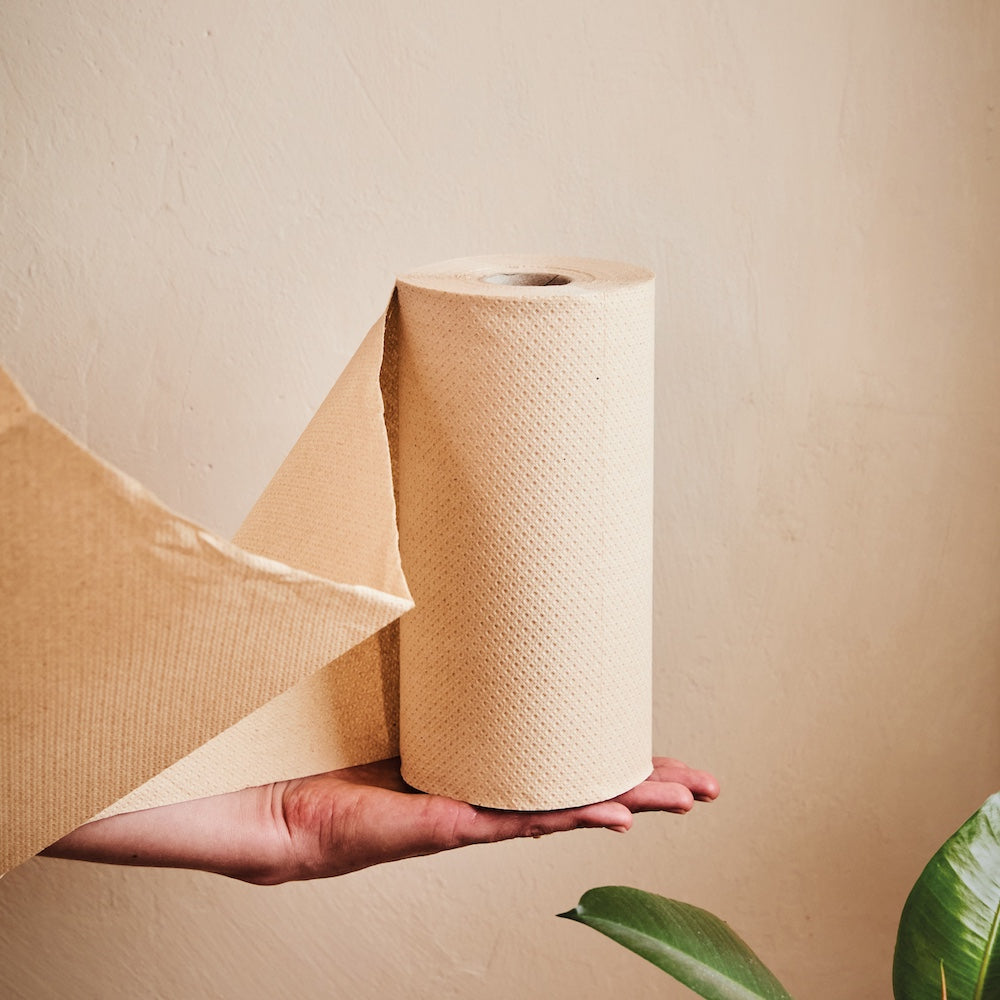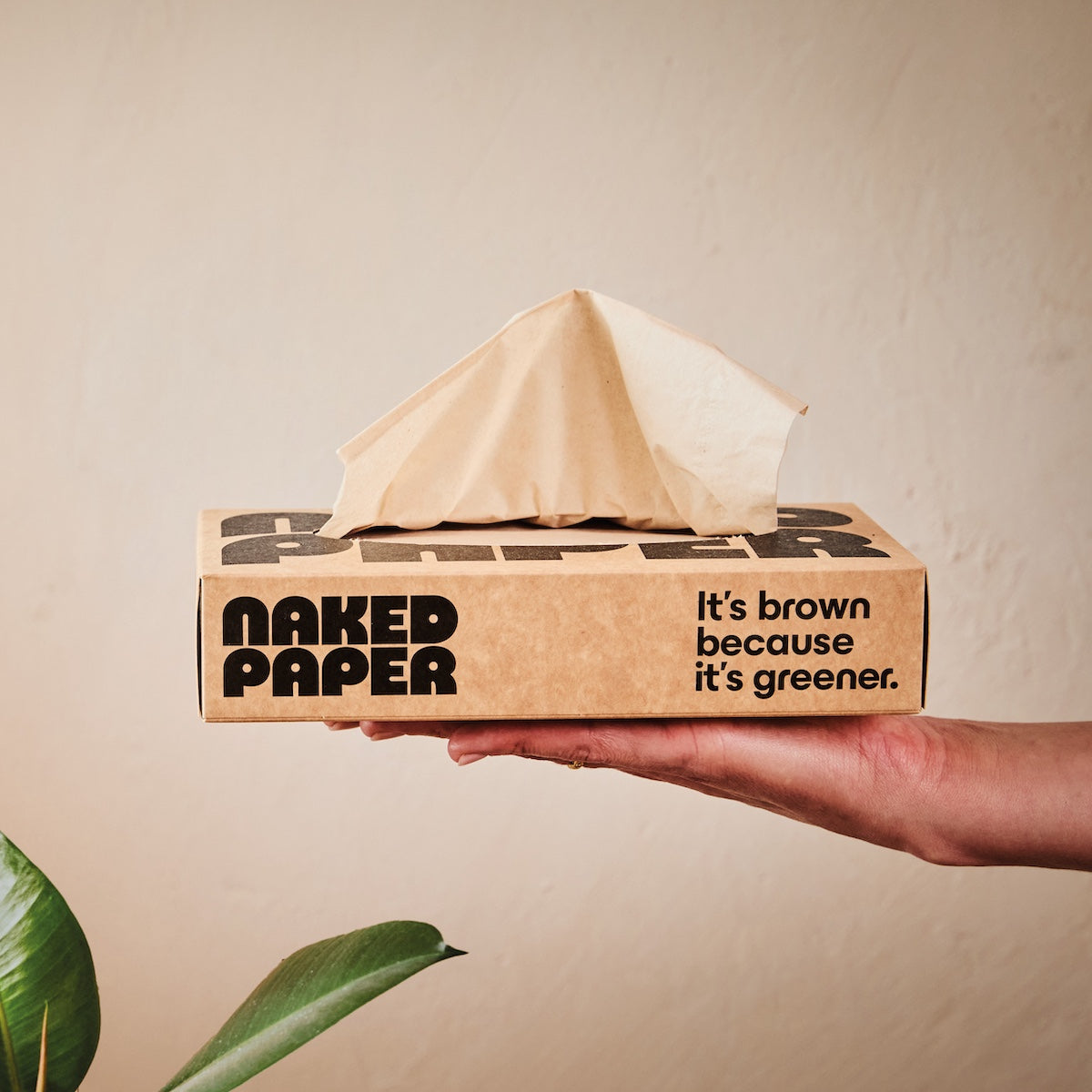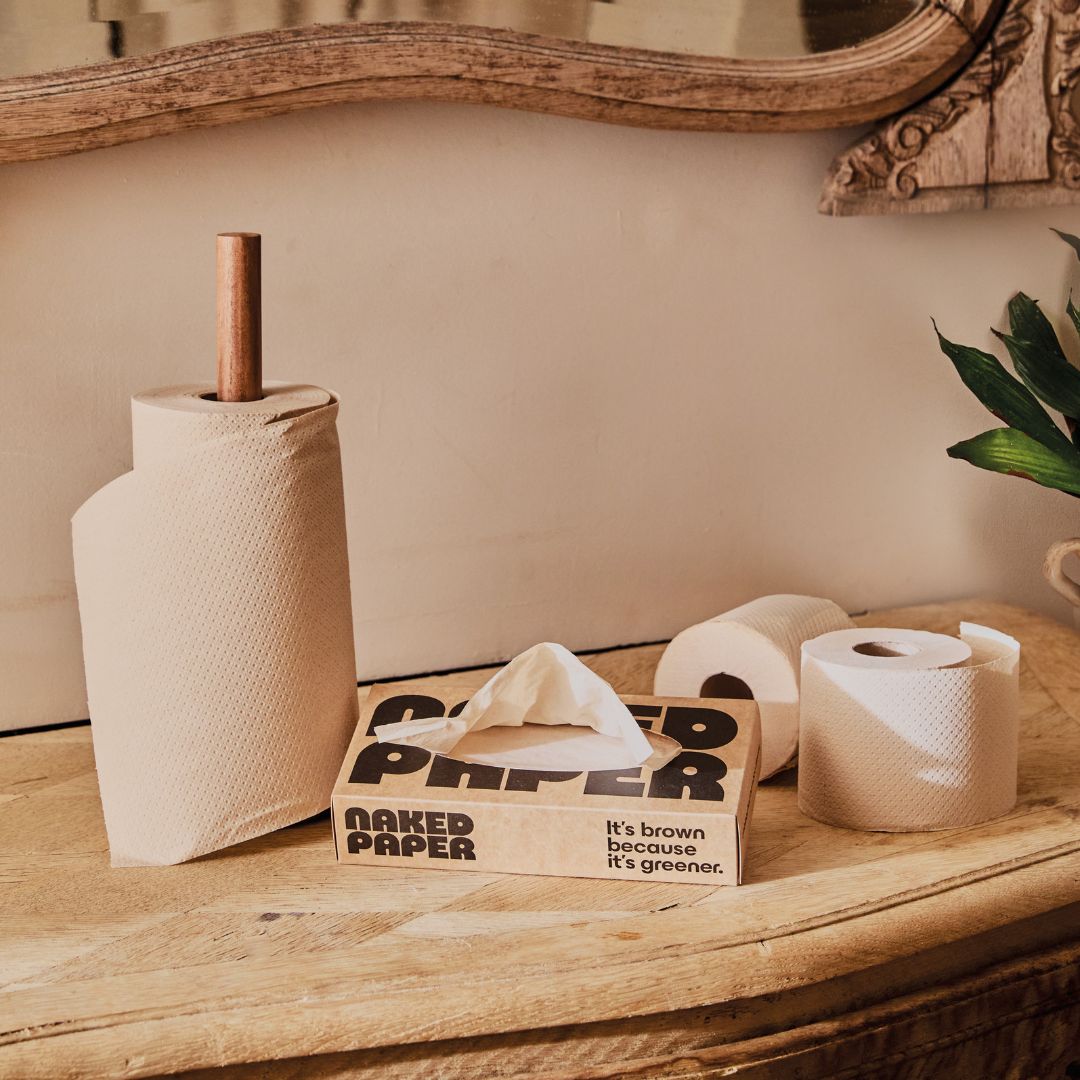How we clean our bleach-free toilet paper

At Naked Paper we love to dig into the details of how raw materials become finished products. Since you’re here, we’re guessing you do too.
One of the most common questions we get is: how do you clean the pulp that makes your toilet paper?
It’s a fair question. After all, we’re all about keeping things simple, unbleached, and free from harsh chemicals. So how do we make sure our pulp is clean if there’s no bleach involved?

Why is toilet paper made with bleach anyway?
This might surprise you but stick with us; toilet paper isn’t bleached to make it clean.
Think about how often you use unbleached napkins and cardboard cups in coffee shops, or unbleached paper bags in your local greengrocer or bakery. You probably don’t bat an eyelid at this, and you shouldn’t. Bleach isn’t used to clean paper, it’s used to change the colour.
For companies that make coloured toilet paper or cover their rolls with wrapping, bleach makes chemical dyes easier to stick. And for toilet paper suppliers that make recycled toilet paper out of printed documents and receipts, it means their tissue doesn’t end up a sludgy grey.
But if bleach isn’t used to clean paper, what is? And how do we make sure our naturally beige tissue products are clean?

Sorting the raw materials
Toilet paper has been around for over a hundred years, and the basic process hasn’t changed much. You break down raw materials, add water to make pulp, press the pulp flat, and dry it.
But, depending on the raw materials, you might need to do a bit more sorting before you get to the pulping stage.
Our rolls are either made from bamboo or recycled card and paper. Bamboo is easy. It comes to our factory in neat dehydrated blocks of shredded fibre. It’s grown without pesticides, it doesn’t need to be bleached, and bamboo is considered naturally antibacterial.
The bamboo we use for our soft toilet roll goes into our paper kitchen towels and our facial tissues, so that’s most of our products covered. All that’s left is our recycled toilet rolls, which are made from waste packaging materials; cardboard boxes and kraft paper.
This is where things get tricky.
If you’ve ever put delivery boxes or envelopes into your recycling box you’ll be familiar with the kind of material we use. And you can probably think of lots of extra bits that we don’t want in there. Plastic envelopes, chunks of glue, string and staples. All of this needs to be removed before we can get to pulping.
Traditionally, these unwanted bits are removed by eye. This is a slow process, and you end up with a lot of fibre that could be used going to waste.
So, we upgraded.
Since 2024 our recycled material has been sorted in a brand new recycling centre that does most of the hard work for us. Using automated conveyor belts, it detects and filters out all the junk far more efficiently. We now recover 82% of the good fibres - up from 50%. And we’re steadily improving the system to bring us up to 100%
The whole system runs on renewable energy that we generate at our factory, so there’s no loss to our energy efficiency.

Getting into the nitty gritty
Great, so we have a big pile of card and paper that doesn’t contain any of the obvious bits, like staples or plastic film, that shouldn’t be there. At this stage we can mash it up with water and mix it to make pulp.
But the pulp isn’t considered fully “cleaned” yet - there are still some small odds and ends to be filtered out.
Ink, adhesives, and microscopic plastic residues from old packaging don’t just vanish - they turn into something called “stickies.” Stickies do exactly what they sound like: clog machinery, cause wrinkles in the finished product, and generally make a mess of things.
So the next step of cleaning is critical. The recycled pulp goes through multiple separation and filtering stages, isolating every last bit of glue, ink, and debris, and using some gentle salts and soaps to help break down any unwanted residue.
All of the ingredients we use in this stage meet REACH regulation standards, so they’re non-toxic and essentially neutral in their environmental impact. The water that we use in our factory is so free of contaminants that we can return it to the river after we use it, and we’re left with clean paper pulp, ready to become tissue.

Eco toilet rolls, cleaned with care
The clean pulp is pressed, dried, and rolled into “creped” sheets. Two of these sheets are sandwiched together using vegan-friendly glue derived from pine resin to make 2 ply toilet paper. After this our rolls are cut to size and packaged into boxes, and we’re done.
Our materials have been cleaned and converted into soft toilet paper with:
🤎 No bleach
🪶 No PFAS (“forever chemicals”)
📦No BPA
📜 No plastic
By using renewable bamboo and recycled packaging materials, we’re able to create high-quality, biodegradable toilet paper that’s gentle on your skin and the environment.
Whether you’re looking for bleach-free tissue for your home, you’re after bulk buy toilet roll options, or you’re ready to set up an eco toilet roll subscription, we’ve got you clean and covered.
Want to make a switch to cleaner toilet paper?
Recent blog posts
-

Why we say "climate footprint" not "carbon footprint"
Our climate is changing as a result of the way people live, travel, and shop. And while everyone has a role to play in the transition to more sustainable ways of living, the bulk of the responsibility has to lie...
-

Unbleached, uncomplicated, unbelievably aligned
Sometimes things just fit together perfectly. Like a bleach free kitchen roll standing ready on a worktop made from reclaimed timber chippings. Our partnership with GS8 is a lot like that. GS8 are an award-winning developer and contractor of planet-positive...
-

Toilet paper for septic systems
If you’ve got a questions about toilet paper, we’ve got answers. Today we’re digging into a topic that might not occur to 96% of the UK population, but is critical to the other 4%. What is the best toilet paper...







